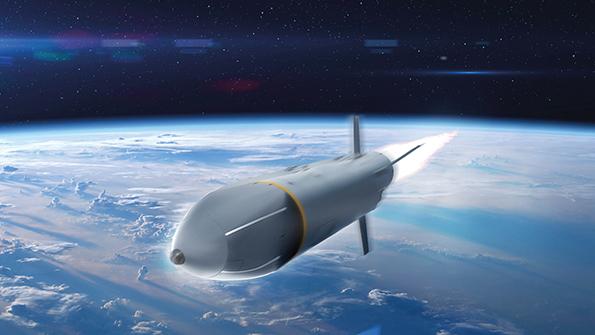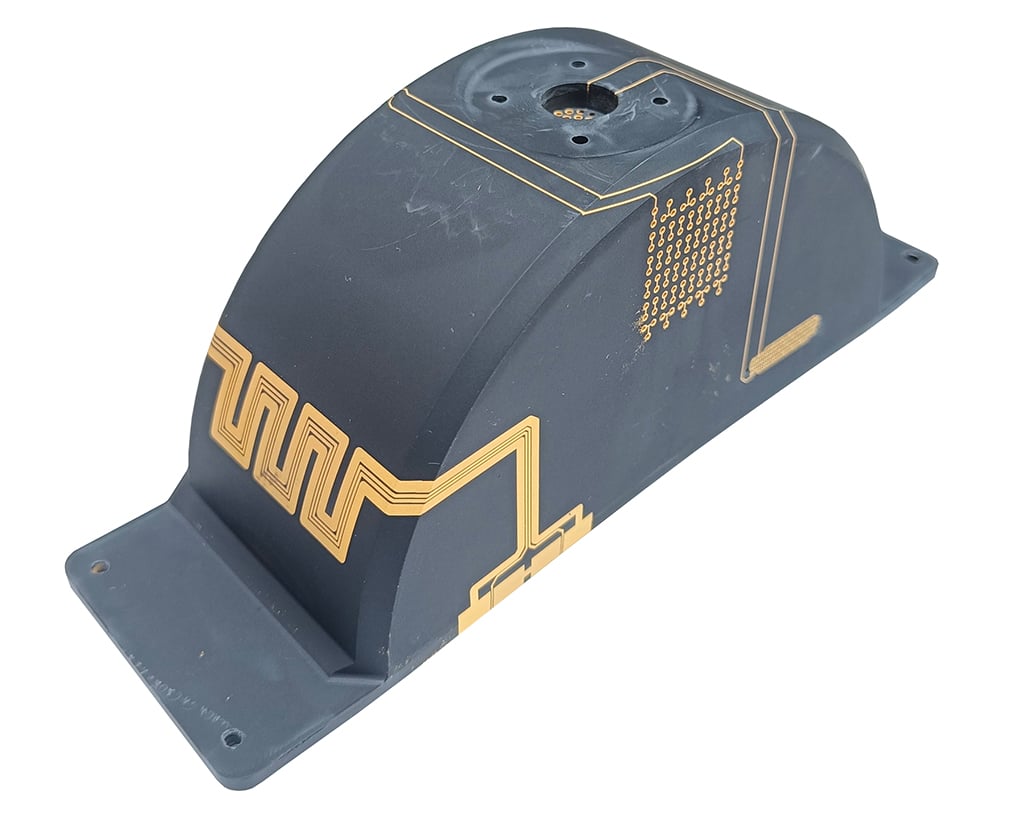
Hybrid rocket motors that could help extend the range and performance of future missiles are being explored through the Complex Weapon, Innovation and Technology Partnership.
The ability to throttle and modulate a hybrid rocket motor has teased missile manufacturers for decades.
Using propellants in different states—one a liquid or gel, the other a solid—could boost weapon ranges or offer tunable levels of performance for the various phases of a weapon’s flight.
- CW-ITP initiative continues from joint MCM-ITP that ended in 2021
- Governments are “committed” to continuing the project beyond 2025
- Hybrid rocket motor research leans on French launcher startup’s technology
However, the architectures developed for hybrid rockets are usually large and cumbersome, making them difficult to apply in small tactical weapons, which is why most of those use solid rocket motors.
Now a team from French space startup HyPrSpace and rocket motor specialist Roxel are exploring whether a new hybrid rocket motor architecture developed for a satellite launcher could find a role in missiles.
HyPrSpace has adapted and scaled down the architecture it plans to use for its Orbital Baguette Mk. 1 microsatellite launcher, whose development is supported by the French government’s France 2030 economic development plan.
The scaled-down motor, nicknamed the Joker, is being tested as part of a €500,000 ($530,000) 24-month Hybrid Rocket-Powered Missiles project funded by the Franco-British Complex Weapon, Innovation and Technology Partnership (CW-ITP).
This partnership, born in 2021 out of the 13-year Materials and Components for Missile Innovation and Technology Partnership (MCM-ITP), continues the latter’s tradition of testing and proving out innovative systems at low technology readiness levels and preparing them for exploitation in the next generation of missiles being developed by the two countries.
The CW-ITP’s projects focus on reducing the size, weight, cost and power consumption of missile components, facilitating their exportability and improving overall weapon performance. The performance objectives include achieving longer ranges and higher speeds, with the resulting components feeding into missiles developed and manufactured by MBDA.
“Solid [rocket] propulsion is great; it has numerous advantages around availability and reliability,” HyPrSpace Chief Operating Officer Sylvain Bataillard told the CW-ITP Conference in Edinburgh, Scotland, on Oct. 24-25. “However, the thrust profiles are predetermined—we cannot really change the thrust profile, so we will not be able to change the speed of the missile.”
With the hybrid rocket, the ability to modulate the thrust brings “different speeds, different forces and different types of missions,” Bataillard noted.
HyPrSpace’s hybrid rocket architecture moves the oxidizer tank from above the fuel grain tank to inside it—where the combustion occurs—making the entire system more compact.
“Rather than having a system that is several meters long . . . it now fits into the traditional sort of volume envelope that you would see for a tactical system,” Philip Gill, principal propellant chemist at Roxel UK, told the conference.
Do not expect the hybrid technology to replace the solid rocket motors in air-to-air missiles anytime soon, however. Bataillard indicated that the technology scales up better than it scales down, and he anticipates that the smallest diameter to which the technology can be shrunk is about 20 cm (8 in.). MBDA’s Advanced Short-Range Air-to-Air Missile has a 16.60-cm diameter and its Mica air-to-air missile a 16-cm diameter.
“[The hybrid rocket motor] cannot be miniaturized indefinitely,” Bataillard told the conference. “There are valves, and you need to maintain a certain thickness for the structures.”
The CW-ITP’s hybrid rocket motor study plans to undertake further testing in its second phase using propellant grains provided by Roxel. A third phase is slated to simulate how the approach could be used in conjunction with a ramjet, a propulsion method used on MBDA’s Meteor beyond-visual-range air-to-air missile and envisaged for the high-supersonic cruise missile component of the Franco-British Future Cruise/Anti-Ship Weapon joint development project. In the Meteor’s case, once the weapon’s solid rocket motor has burned out, it leaves a combustion chamber for the ramjet to take over.
“The hybrid rocket holds much potential as a flexible propulsion system, rather than the solid rocket motor, which works simply by brute force,” Bruno Verzotti, MBDA director of future systems, told Aviation Week at the same conference.
The CW-ITP aims to encourage collaboration between France and the UK with joint projects involving primes, suppliers, startups and academia. The budget is £10 million ($12 million) annually. Although the MCM-ITP work represents a small proportion of MBDA research and development efforts in the countries, the technologies developed through that earlier effort are set to feature in the next generation of weapons.
About 20 research projects have been funded by the CW-ITP through its so-called enduring technical areas, which include mission systems, seekers, fusing, propulsion, materials and electronics.
The CW-ITP has also provided seed funding to several short-term disruptor research projects that are considered high-risk but potentially high-reward. These have focused on component testing, anti-spoofing of navigation using an atomic spin gyroscope and studies into the use of quantum computing for route optimization for deep-strike weapons. Part of the CW-ITP’s materials research is focused on hypersonics, recognizing the intense thermal strains on components such as the missile airframe, nosecones and the leading edges of missile fins.
Research has also been carried out into treatments to protect seeker windows from the effects of degradation from rain erosion when the missile is traveling at high speed.

Another critical technology explored through the initiative is the use of 3D-molded interconnect devices, which add electrical connectivity to the surface of 3D structures. The technology, tested through the CW-ITP’s Molded Interconnect for Missile Electronics (MIME) project in conjunction with French company S2P, resulted in several 3D additively manufactured devices created with integrated interconnections.
Such technology has the potential to reduce the need for wiring inside the missile, resulting in fewer parts, lower weight and potentially improved ease of assembly—particularly as missiles become smaller and more densely packed with electronics. The MIME efforts align with calls for increased weapon security and safety integrity requirements, MBDA officials told the conference.
“We have to take into account many other constraints that are maybe less visible from the outside but that are also very strategic in order to develop the next generation of our electronic equipment,” one MBDA official said.
Another CW-ITP project is a feasibility study of a hybrid starter for a turbojet engine for use in conditions that may prevent the turbojet from windmilling into life. Led by Safran and ArianeGroup’s Pyroalliance, it is focused on high-altitude ignition of the engine, where it may struggle to find oxygen to start. Engineers envision that such systems may be needed for low-altitude launches, where there may not be enough time for a windmilling engine start, or for release from a combat aircraft’s weapon bay, where the weapon is not exposed to outside air until it is dropped.
The proposed system—with its hybrid rocket to stir the turbojet into life—might require significant space inside the missile due to the oxidizer tank alone.
The French and UK governments have not signed off on the next tranche of CW-ITP funding. But Nicholas Joad, the UK Defense Ministry’s director of defense science and technology, told the conference that the two governments were “committed to make this collaboration go forward beyond 2025.”
Both nations, he said, had committed themselves to gaining a “strategic advantage” through science, technology and innovation. The CW-ITP collaboration is allowing the countries to “go off and do things that we would not feel brave enough to do on our own,” he added.





